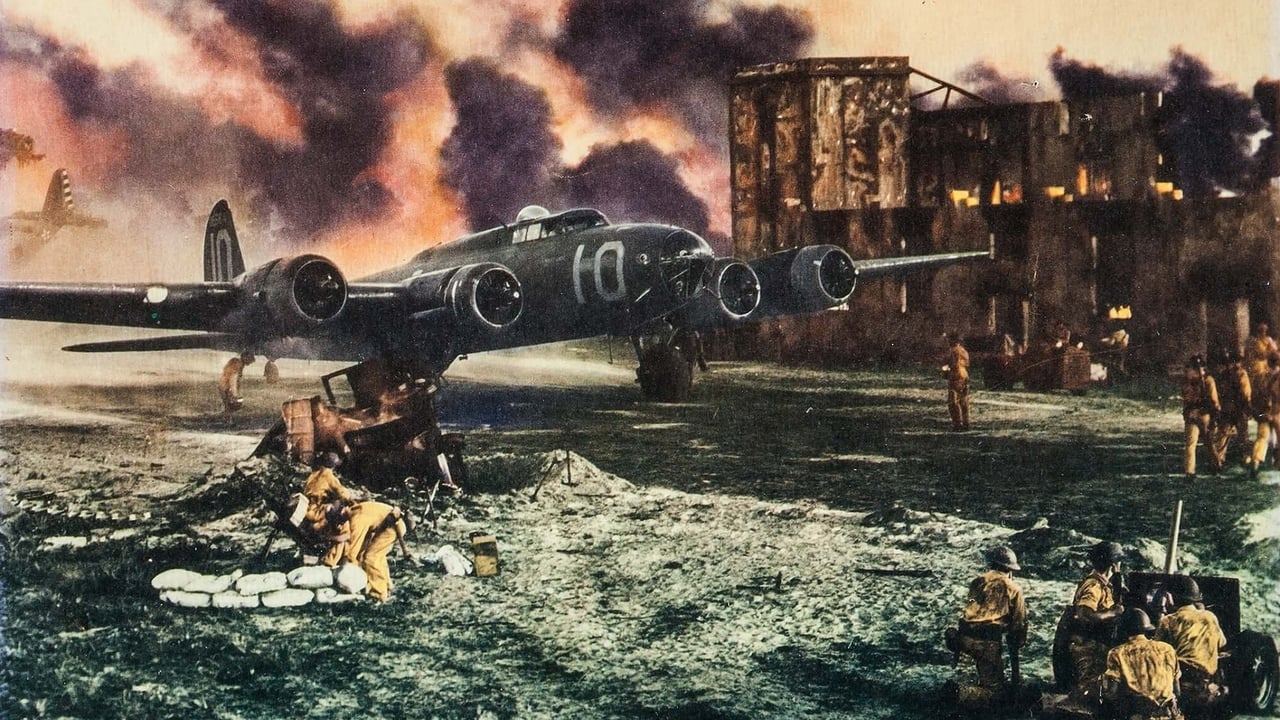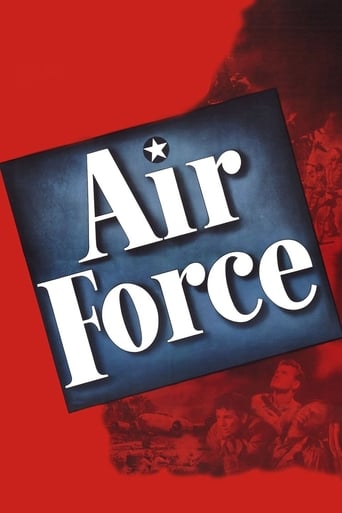

As a child, TV I watched "Air Force" and other war films some consider WW II "propaganda" on TV. As a young man, after a night of carousing, I'd come stumbling home and, if a channel were showing these types of films, I'd watch them on the Late, Late Show. Now, I watch these films for the excellent acting, action, and for their historical content significance as "propaganda" films during the dark part of WWII for the US and its allies. When it seemed as if Japan and Germany were conquering the world. And I could also enjoy the action and danger vicariously.Don't kid yourself that Hollywood no longer makes "propaganda" films. They are making them now more than ever. The films are just a different type of "propaganda".
... View MoreI imagine "Air Force" will more likely be enjoyed by World War II and/or aviation enthusiasts than it will be by casual moviegoers. There's a lot of shop talk in the film about bombers, and it's almost as much about the impressive power of warplanes specifically as it is the United States Air Force in general. A sort of day in the life of Air Force soldiers, it chronicles the adventures of a bomber crew who show up in Hawaii just after it has been bombed by the Japanese and then are sent on to various missions by military brass. It's a propaganda film like so many of the films that came out during WWII, but it's an uncharacteristically dark one and its predominant mood is one of weariness and exhaustion, which makes sense given its year of release (1943).In addition to its nomination for Best Original Screenplay, "Air Force" won the 1943 Oscar for Film Editing, probably for a couple of impressive dog fights that had to have influenced George Lucas when filming the Tie Fighter vs. Millennium Falcon space battle in "Star Wars." It also was nominated for its black and white aerial cinematography and its special effects.I mostly found "Air Force" to be unengaging, but I did appreciate its subdued tone and its depiction of the men serving in WWII as strung out, sleep deprived and riddled with personal anxiety. It's a nice contrast to the rah-rah patriotism of so many other war films of the time period.Grade: B
... View MoreOn December 6, 1941, a group of nine Air Force men assemble for a what is hinted to be a secret mission; they board a B-17 named "Mary-Ann" in San Francisco, and take off for Honolulu. Pilot John Ridgely (as "Irish"), co-pilot Gig Young (as Bill), bombardier Arthur Kennedy (as Tommy), navigator Charles Drake (as "Monk"), crew chief Harry Carey (as Robbie), assistant crew chief George Tobias (as Weinberg), radio operator Robert Wood (as Peterson), assistant radio operator Ray Montgomery (as Chester), and aerial gunner John Garfield (as Joe Winocki) hear "Japs" on their radio, while flying over the Pacific Ocean. Yes, they are headed to Hawaii as the treacherous Japanese are attacking Pearl Harbor! Upon landing, the crew tour the demolished United States base. After hearing the cries of a blinded child, they visit a wounded woman who is both Mr. Kennedy's sister and Mr. Young's girlfriend. The men listen to president Franklin D. Roosevelt ask Congress to declare WAR as they, joined by James Brown (as Tex Rader), head for action in Manila, Philippines. Howard Hawks' "Air Force" is a mostly exciting, well-produced World War II propaganda film; director Hawks effectively inserts actual wartime footage. The characters do not turn out to be as interesting or diverse as you're led to believe; but, they serve their purpose well. With guys like these, those Japanese invaders never stood a chance!****** Air Force (2/3/43) Howard Hawks ~ John Garfield, Gig Young, Arthur Kennedy
... View MoreBack when I was a kid one of the local station in my town would show this movie frequently. My brothers and I would watch it every time we can and it became a personal favorite. As the station grew more prosperous and moved on to other things, this movie disappeared along with dozens of old movies. The innocence of childhood made war movies enjoyable. Of course we all know now the old cliché "War is Hell". Anyway, of all the war movies that I enjoyed in my childhood this one was special. It inspired me to try and get into the air force, (4F). The movie of course is a wartime propaganda made to boost morale of our nation. There are dozens like these made during that time but I think this is one of the best. The movie begins with the flight crew of the B-17 bomber the "Mary Ann' on a routine flight from San Francisco to Honolulu on the evening of December 6, 1941. During the flight we get to meet the crew and they are just the standard WWII crew in any movie. The New York cabbie ("It ain't New York once you cross the Brooklyn bridge."), the farm boy, the old vet who would fight anybody who demeans the air corp and the outcast.The dialog for the most part isn't very original, but what Howard Hawks knew then was that dialogs in on itself can be entertaining specially if they are delivered in his usual Rat-tat-tat style. Mr Hawks know how to make any movie entertaining, even when the crew were just listening to the radio it was very entertaining. But the movie was a war propaganda and we soon plunge into the attack on "Pearl Harbor", the combat scenes in this movie are some of the best I've seen in movies from that era. They're very exciting and fast paced as a matter of fact I think some of the scenes when they were airborne and fighting off the enemies might have inspired the scenes in "Star Wars" when the 'Millenium Falcon' was under attack.The special effects on this film garnered it an Oscar nomination (one of four the film got it won best editing) and it's pretty decent for the 1940s. The miniatures are obvious now, specially if compared to some of the latest CGIs, nevertheless it's very well done. Although I still don't know if the shot over the Golden Gate bride was real or not.Yes the movie had a racist tone and yes it has a rah-rah feel to it. But one must remember the times, the United States was attacked because our transgression against the Japanese was we cut off supply to them after they invaded China and Manchuria (Korea) and slaughtered hundreds of thousand innocent civilian. The movie also has a problem with it's time line, from the bombing of Pearl Harbor, to the last stand at Wake island to the evacuation from Manila to the Battle of Coral Sea? Coral sea took place five months after Pearl Harbor. Nevertheless it's a very good film and will remain a favorite of mine for a long time.
... View More